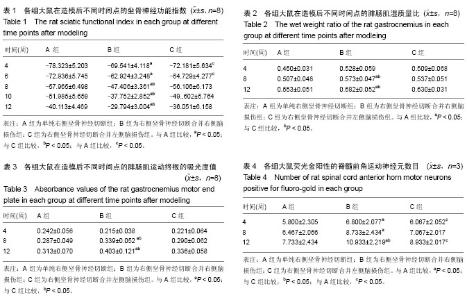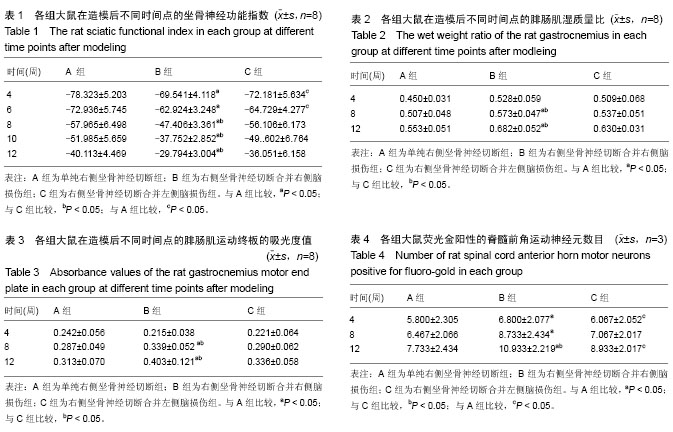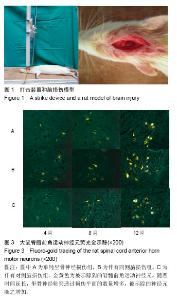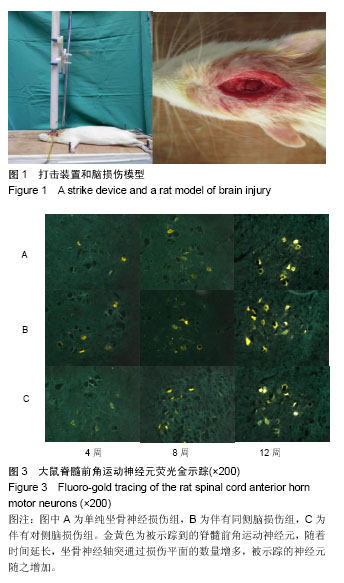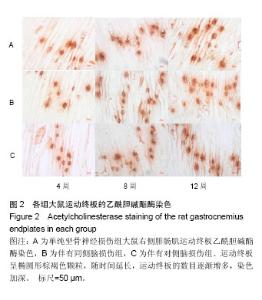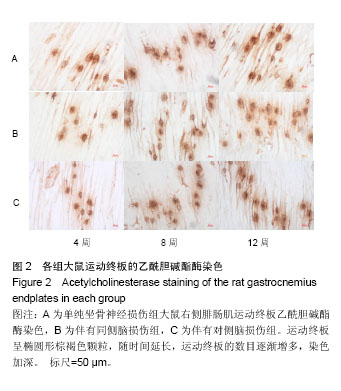| [1] Moore AM, Franco M, Tung TH. Motor and sensory nerve transfers in the forearm and hand. Plast Reconstr Surg. 2014;134(4):721-730.[2] Pabari A, Yang SY, Alexander M, et al. Modern surgical management of peripheral nerve gap. J Plast Reconstr Aesthet Surg. 2010; 63(12):1941-1948.[3] Zilic L, Garner PE, Yu T, et al. An anatomical study of porcine peripheral nerve and its potential use in nerve tissue engineering. J Anat. 2015; 227(3):302-14.[4] Reis C, Wang YC, AkyolO, et al. What’s New in traumatic brain injury: update on tracking, monitoring and treatment. Int J Mol Sci. 2015; 16(6):11903-11965.[5] Kulbe JR, Geddes JW. Current status of fluid biomarkers in mild traumatic brain injury. Exp Neurol. 2016;275(3): 334-352.[6] Liu HW, Wen WS, Hu M, et al. Chitosan conduits combined with nerve growth factor microspheres repair facial nerve defects. Neural Regen Res.2013;8:3139-3147.[7] 刘焕兴,季日旭,麻光喜,等.碱性成纤维细胞生长因子注射方式及剂量对大鼠外周神经损伤修复的影响[J].医药导报, 2014,33(1): 5-7.[8] 黄海涛,刘华蔚,胡敏.神经营养因子促周围神经再生的研究进展[J].神经解剖学杂志,2013,29 (5):599-602.[9] 王刚,范顺武,李强,等.神经生长因子梯度缓释系统促进周围神经再生的临床疗效观察[J].中华显微外科杂志, 2013,36(6): 558-562.[10] 何新泽,王维,马建军,等.颅脑损伤促进的坐骨神经再生[J].中国组织工程研究,2016,20(27):4061-4067.[11] Feeney DM, Boyeson MG, Linn RT, et al. Responses to cortical injury: methodology and local effects of contusions in the rat. Brain Res. 1981;211(1):67-77.[12] 林莉,杨枫,李霄,李冰.改良乙酰胆碱酯酶染色法显示兔骨骼肌运动终板[J].临床与实验病理学杂志, 2009, 25(2): 218-219.[13] Gibson JMC. Multiple injuries: The management of the patient with a fractured femur and a head injury. J Bone Joint Surg (Br), 1960;42(3):425-431.[14] Roberts PH. Heterotopic ossification complicating paralysis of intracranial origin. J Bone Joint Surg (Br).1968;50(1):70-77.[15] Wildburger R, Zarkovic N, Egger G, et al. Basic fibroblast growth factor (BFGF) immunoreactivity as a possible link between head injury and impaired bone fracture healing. Bone and Mineral. 1994;27(3):183-192.[16] Hofman M, Koopmans G, Kobbe P, et al. Improved fracture healing in patients with concomitant traumatic brain injury: proven or not? Mediators Inflamm. 2015;2015:204842.[17] Pu LL, Syed SA, Reid M, et al. Effects of nerve growth factor on nerve regeneration through a vein graft across a gap.Plast Reconstr Surg. 1999;104(5):1379-1385.[18] Santos D, González-Pérez F, Giudetti G, et al. Preferential enhancement of sensory and motor axon regeneration by combining extracellular matrix components with neurotrophic factors. Int J Mol Sci. 2017;18(1):65.[19] Acosta SA, Tajiri N, Shinozuka K, et al. Long-term upregulation of inflammation and suppression of cell proliferation in the brain of adult rats exposed to traumatic brain injury using the controlled cortical impact model. PLoS One. 2013; 8(1):e53376. [20] Lykissas MG, Batistatou AK, Charalabopoulos KA, et al. The role of neurotrophins in axonal growth, guidance, and regeneration. Curr Neurovasc Res. 2007;4(2):143-151. [21] 黄海涛,刘华蔚,胡敏.神经营养因子促周围神经再生的研究进展[J].神经解剖学杂志,2013,29(5): 599-602.[22] 高旭鹏,彭江,孙逊等.周围神经细胞外基质在神经再生中的研究进展[J].解放军医学院学报,2014,35(9):970-973.[23] 李陶,陈意生,王禾.睫状神经营养因子,雪旺氏细胞与周围神经再生[J].国外医学(临床生物化学与检验学分册) ,2001,22(1): 25-25,27.[24] 赵娟,俞红,徐义明,等.物理治疗促进坐骨神经损伤再生的实验研究[J].中国修复重建外科志,2011,25(1):107-111.[25] Shen N, Zhu J. Application of sciatic functional index in nerve functional assessment. Microsurgery.1995;16(8):552-555.[26] Ma J, Smith BP, Smith TL, et al. Juvenile and adult rat neuromuscular junctions: density, distribution, and morphology. Muscle Nerve. 2002;26(6):804-809.[27] Catapano LA, Magavi SS, Macklis JD. Neuroanatomical tracing of neuronal projections with fluoro-gold. Methods Mol Biol. 2008;43(8):353-359. [28] Ertürk A, Mentz S, Stout EE, et al. Interfering with the chronic immune response rescues chronic degeneration after traumatic brain injury. J Neurosci. 2016 ;36(38):9962-9975. [29] Kwon HG, Jang SH. Delayed gait disturbance due to injury of the corticoreticular pathway in a patient with mild traumatic brain injury.Brain Inj. 2014; 28(4):511-514. |
